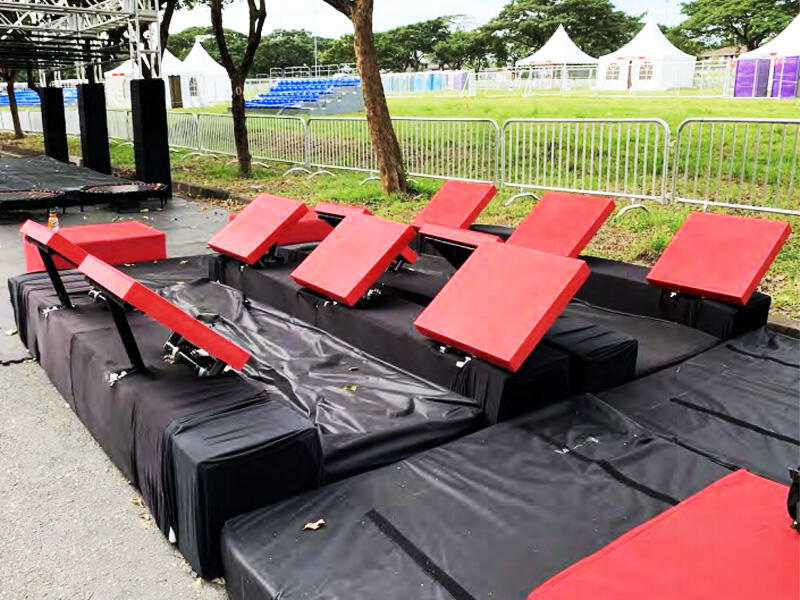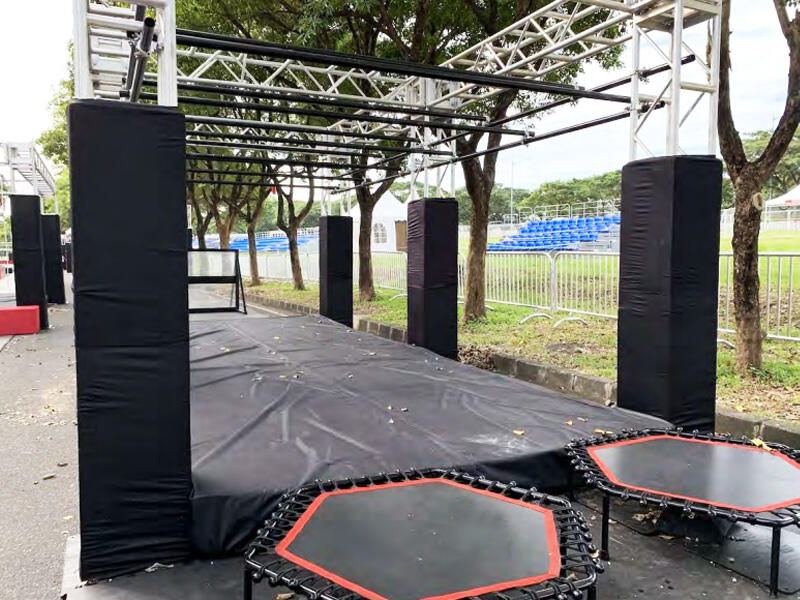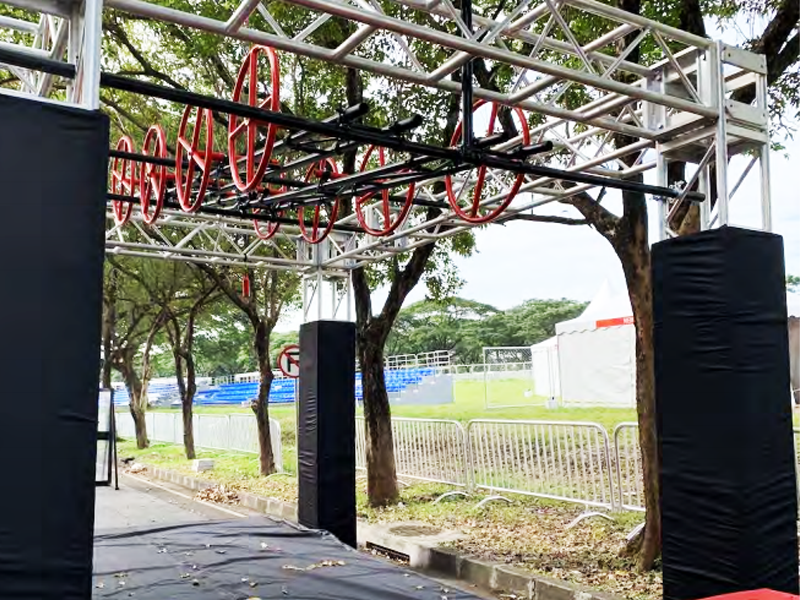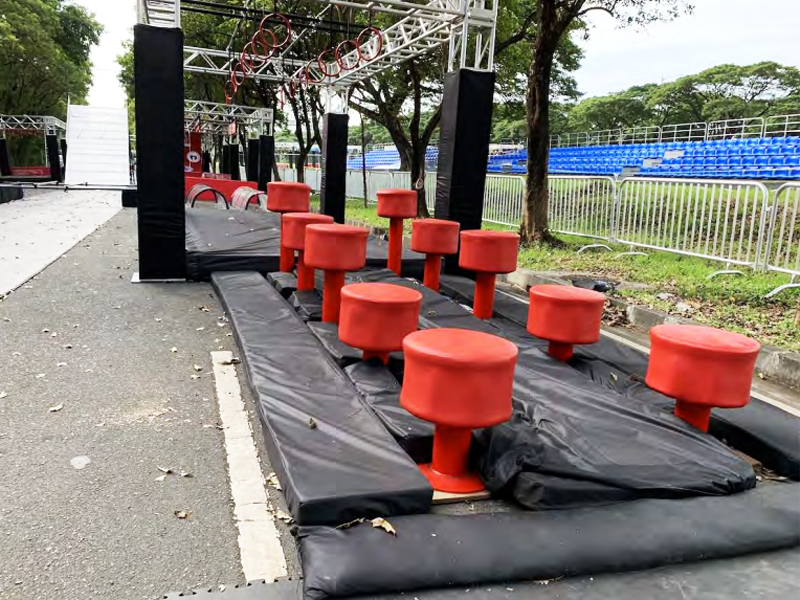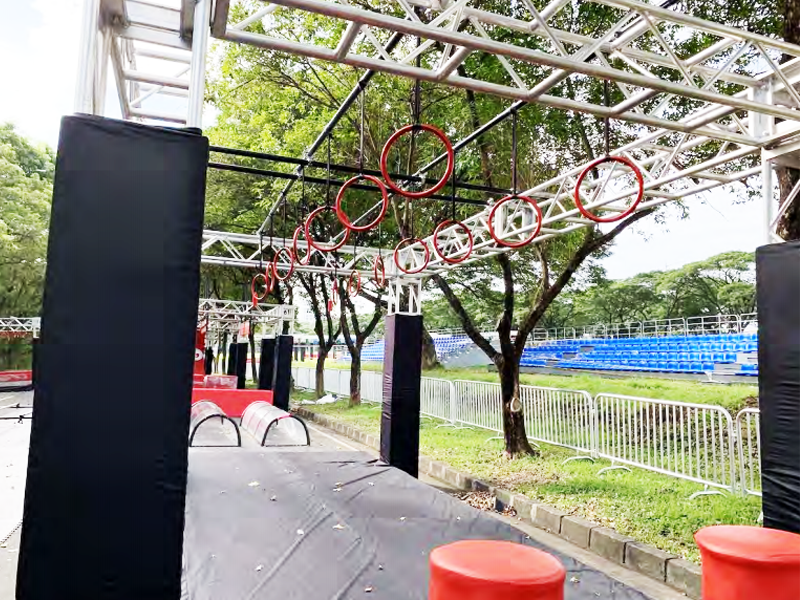Where to get a standard OCR 100m Course for the official FISO obstacle race competition
Best Facilities for FISO OCR 100m Course Training
Obstacle Formula Certified Training Centers
Training centers need proper certification if they want to live up to the standards established by the Fédération Internationale de Sports d'Obstacle (FISO). The certification process checks whether facilities comply with strict rules around things like athlete safety, course design specs, and coach qualifications. Certified locations pop up all over the world really. We see them throughout the United States, across various parts of Europe, and even down under in Australia. Take for instance the OCR Training Grounds here in America, or the European OCR Centre located in Germany somewhere. Down in Australia there's this famous place called the Ninja Warrior Academy that athletes travel from far and wide just to train at. These spots have invested heavily in equipment and infrastructure that gives competitors a realistic taste of what competition day will be like.
What makes these training centers stand out is their custom built obstacle courses that really push OCR skills while also running solid training programs led by experienced coaches. Most trainers here have spent years competing and coaching in actual OCR events, so they know exactly what it takes to get ready for those tough races. The courses themselves are packed with all sorts of challenges from vertical wall climbs to swinging logs over water gaps, making them suitable whether someone is just starting out or already pretty good at this stuff. Anyone interested in finding local FISO certified spots should check out the websites these places maintain online. They often post videos of their courses and sometimes even share training tips from their staff members.
Local Gyms with OCR-Specific Setups
Gyms around town that have OCR specific setups really make a difference for people serious about their training. When climbers can get hands on stuff like real climbing walls, rope swings hanging from the ceiling, and those old school monkey bars, they actually get to work on the moves that matter most. The whole point is to create an environment that feels just like what they'll face at competitions, so when race day comes around, there's no big shock factor between practice sessions and the real deal.
When OCR athletes search for a good gym, they need places with proper gear plus people who get what they're going through. Hanging out with fellow OCR fans at these spots really helps keep motivation high and makes workouts more productive. Most folks find recommendations through local OCR groups or online boards focused on obstacle races. Spending some quality time in these communities usually leads to stumbling upon gyms that actually understand OCR training needs. These places become gold mines for anyone serious about improving their performance in races.
Outdoor Parks with Terrain Simulation
Outdoor training parks that mimic real world obstacles are probably the best bet for anyone serious about OCR events. What makes these places so valuable is their mix of terrain options - think steep climbs, slippery mud patches, thick woods sections, and uneven rock formations. This variety really gets athletes ready for what they'll face on actual race day when conditions can change without warning. Beyond just physical conditioning, these environments teach important lessons too. Runners learn how to adjust their pace when faced with unexpected obstacles, maintain balance on tricky surfaces, and push through fatigue during longer segments. The experience gained here translates directly to better performance in competitive settings where unpredictability is the norm.
Some great parks for OCR training are Griffith Park in LA and Hampstead Heath across the pond in London. What makes these spots stand out is how varied their landscapes are, which lets people set up all sorts of homemade obstacle courses. Instead of just relying on equipment, runners can make use of trees, hills, and other natural elements to build their own barriers and running paths. This kind of training really adds something extra to regular workouts. For best results, anyone serious about OCR should think ahead when planning training days. Mix in different types of obstacles that test strength and stamina together. That way, they'll get all around preparation for race day conditions without breaking the bank on fancy gear.
Key FISO OCR 100m Obstacles to Master
FlSO 100m OCR Obstacleâ OF Offset Steps
The Offset Steps section on the FISO 100m course really puts athletes through their paces when it comes to both accuracy and nimbleness. Competitors need to watch every single footfall as they navigate from point A to B across these specially designed platforms. The trick here lies in staying balanced throughout by lowering the body's center of gravity and making each movement count. Many newcomers tend to rush things forward, moving their weight too fast between steps, and that usually ends badly with someone losing their footing mid-obstacle. Better approach? Take time with each step, stay grounded, and remember the rules clearly state no touching the actual ground surface or those metal supports along the sides during traversal.
FlSO 100m OCR Obstacle -OF Monkey Bars
Monkey bars remain one of those obstacles that really tests someone's upper body power. Competitors need to rely solely on their hands throughout the entire course while making sure their legs stay beneath their shoulders at all times. Getting ready for this challenge involves working on grip strength through exercises like hanging from a bar without moving and doing multiple pull ups. These workouts build both stamina and better form when swinging between the bars. Many find that watching others tackle the monkey bars first helps them understand what works best. Seeing how experienced athletes position their hands and manage their momentum gives newcomers a clearer picture of what they need to do to get across without falling off mid way.
FlSO 100m OCR Obstacle -OF-4-Wheel Rig
The 4 Wheel Rig really puts an athlete's agility to the test, especially when moving in all directions. Competitors have to stay completely off the ground while maneuvering around the course, which means no touching anything except those four wheels. Most people start practicing on simpler versions first before tackling the full rig. Some good prep work includes side-to-side shuffles and shoulder stability exercises since those areas get hammered during competition runs. Body alignment matters a lot here too many beginners lose control because they forget to keep their core engaged throughout the entire movement sequence. Maintaining smooth transitions between sections helps save energy and prevents unnecessary strain on joints.
FlSO 100m OCR Obstacleâ OF Island Steps
The Island Steps basically force athletes to deal with all sorts of wobbly surfaces, which demands serious balance and concentration. Competitors have to stay on those steps without letting their feet hit the ground below, so balance work becomes absolutely essential for anyone wanting to tackle this part of the course. Training sessions often include things like standing on one leg while moving around or doing quick side-to-side shifts, all designed to build better stability. These kinds of exercises get the body used to reacting fast when things go sideways, just like what happens during actual OCR events where terrain changes constantly from rocky hills to muddy patches.
FlSO 100m OCR Obstacleâ OF Rings Rig
The Rings Rig is no joke for anyone looking to conquer obstacle course racing. It really puts your grip strength and core muscles through their paces. When tackling this thing, racers have to swing between each set of rings while making sure their legs stay below shoulder level throughout. Most people who train for this kind of stuff spend weeks building up their core endurance and working on grip strength with things like hanging knee raises or just spending time suspended from pull-up bars. Veteran OCR competitors will tell anyone willing to listen that finding a good rhythm matters way more than trying to power through quickly. Those who take their time and move deliberately tend to get through the Rings Rig without falling off or wasting precious energy.
Training Strategies for OCR 100m Race Success
Building Grip Strength for Hanging Challenges
Strong grip plays a major role in obstacle course racing where athletes face numerous hanging challenges including monkey bars and parallel bars. Athletes looking to improve their grip should consider adding specific training moves to their regimen. Dead hangs and towel pull ups work wonders for finger muscles, forearm development, and shoulder stability all critical components when it comes to sustaining grip during long efforts. Most trainers suggest hitting these exercises around three sessions per week while applying basic strength building concepts. Gradually working up to heavier weights or longer hold times helps develop the kind of grip power needed to tackle those tricky overhead obstacles without failing mid attempt.
Footwork Drills for Precision Obstacles
Good footwork makes all the difference when facing those OCR challenges where agility and accuracy count. Adding ladder drills and cone work to regular training sessions really boosts foot speed and hand-eye coordination. These exercises mimic the fast, exact movements needed to get past obstacles without wasting time. When athletes keep practicing their foot coordination day after day, they notice improvements in race performance. Fewer slips happen during tricky terrain sections, and runners pick up pace where precision matters most on the course. Most OCR competitors will tell anyone who asks that solid footwork isn't just helpful it's practically essential for getting through technical parts of races safely and quickly.
Endurance Training for Back-to-Back Obstacles
Getting through all those obstacles in an OCR event really comes down to having good endurance. To build this up, athletes need to work on both heart health and muscle strength. Doing interval training sessions helps boost stamina and gets the body ready to bounce back after climbing walls or crawling under barbed wire. Circuit workouts are great too since they hit several muscles at once, which builds that lasting strength needed for long races. Cardiovascular conditioning should be front and center in any training plan because when the heart is strong, runners can keep going strong right until the finish line without getting wiped out by exhaustion halfway through.
Preparing for FISO OCR Championships
Understanding Race Qualification Criteria
Getting into the FISO OCR Championships means ticking off certain boxes set out by the Fédération Internationale de Sports d'Obstacles (FISO). These rules act as a sort of measuring stick for athletes worldwide, keeping things level playing field style and upholding quality across the board. Athletes looking to qualify need to get up close and personal with FISO's rulebook. Inside there are all sorts of details about what it takes to make the cut in different racing divisions like elite, para, and age group events. Most serious contenders know they cant just wing it they have to put together smart training plans and strategies that hit those exact standards if they want to actually land a spot at the big event.
Simulating Competition-Day Conditions
Getting used to real race conditions while training makes all the difference when it comes time for the big event. Adding timed runs and simulated race situations to regular workouts helps athletes experience the same stress and intensity they'll encounter during competitions. Athletes who do this kind of preparation tend to develop better pacing strategies and get comfortable dealing with unexpected challenges along the course. Another important aspect is practicing with exactly what will be worn and carried on race day shoes that have been broken in, clothing suitable for weather conditions, and familiar hydration packs. This attention to detail creates muscle memory and confidence that translates directly to better performance at the starting line.


